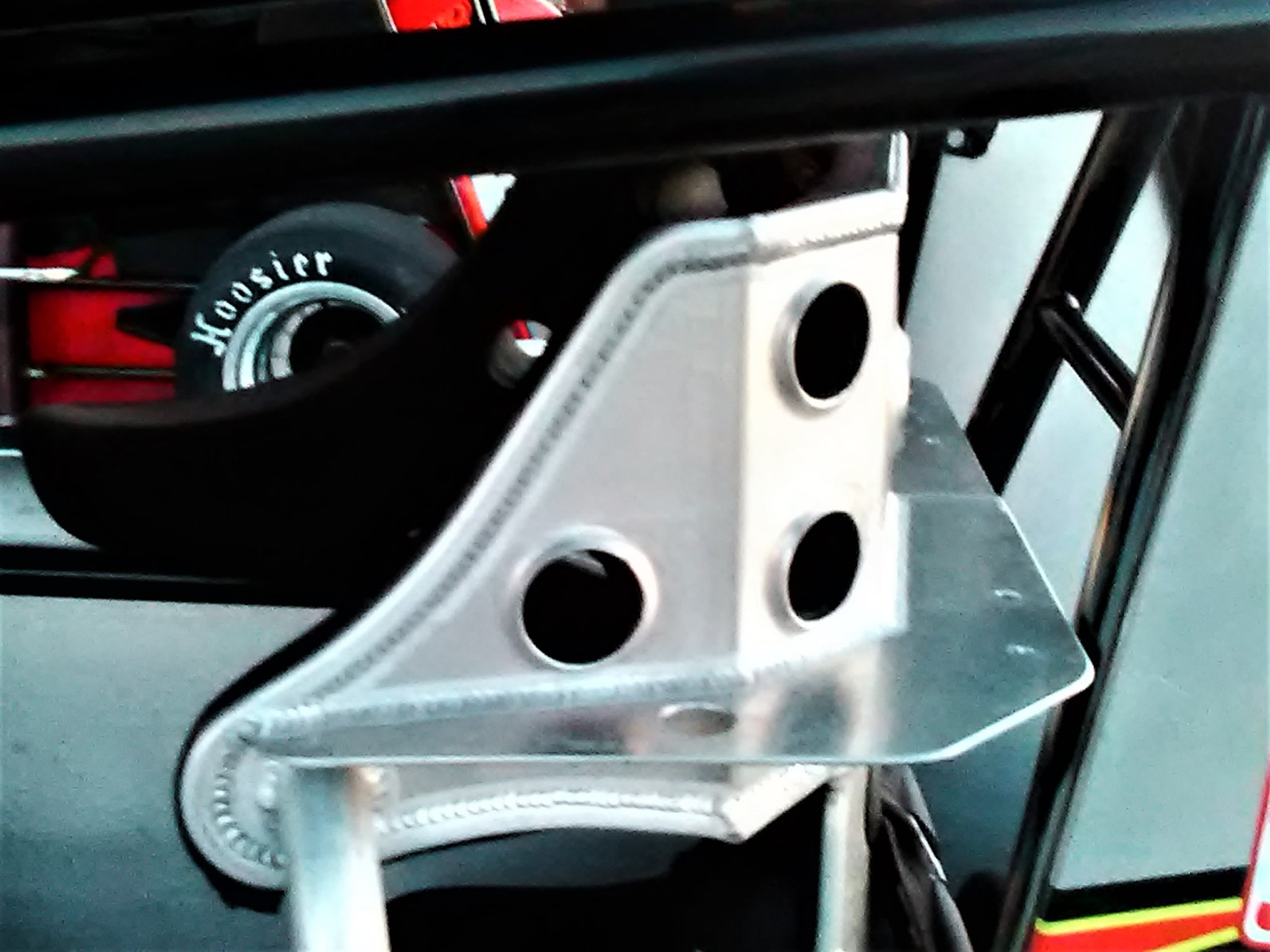

Two weeks after sprint car driver Dave Steele was killed, the Southern Sprint Car Shootout Series was racing again, because that’s what racers do. There was, at least, one big difference: All 20 of the winged pavement sprint cars had a “full containment seat,” a series rule that was enacted immediately after Steele’s death.
Steele’s death at Desoto Speedway in Florida was similar to the fatal accident suffered by Jason Leffler in 2013 at Bridgeport Speedway in New Jersey, in that both cars hit the wall on the left side of the car, after rotating 180 degrees. Leffler’s car apparently suffered a suspension failure, while the left front tire of Steele’s car made contact with the right rear tire of a car he was passing. The car rotated and struck the wall on the left side.
Why is that important? Because if a sprint car hits the wall, it almost always happens on the right side of the car. On an oval track, you only turn left, so it’s much more common to slide into the wall on the driver’s right side. Seats have long been made to wrap around the driver’s head on the right – not just to protect the driver from injury, but to help with the substantial g-forces that occur when you turn left as quickly as a winged sprint car on pavement can. The cage of the car typically is better protected on the right as well.
The photo above is an example of a full containment seat. On the left side of the driver’s head, the seats have traditionally not wrapped around the helmet like they do on the right side. That makes it easier to get in and out of the very tight cockpit. But now, after Steele’s crash, the Southern Sprint Car Shootout Series “will require ALL teams to use a full containment seat,” according to the amended rules. Most of the sprint cars in the series already had that kind of seat, but now all of them do. That keeps the driver’s head inside the cockpit, preventing it from either striking the wall, or allowing the neck to stretch to a fatal degree. Head and neck restraint devices are helpful, but are not necessarily effective in side impacts. Leffler was wearing a head and neck restraint; Steele reportedly was not.
The fact that it was Dave Steele who was killed in the crash resonated nationally. He had raced IndyCars and in NASCAR, but his love was sprint cars, midgets and Silver Crown cars on pavement. Twice he won the USAC Silver Crown championship; twice he won the Turkey Night Grand Prix in California; twice he won the Little 500 at Anderson Speedway in Indiana –arguably the toughest pavement sprint car race there is, starting 33 cars for500 laps on the quarter-mile track.
Saturday night’s race, at Citrus County Speedway in Inverness, Florida, was an emotional affair, with Steele’s family in attendance. Fans donated money during intermission, and a small carved wooden sprint car model was auctioned off for $1,400 to benefit Steele’s widow, Lynn, and their three children.
A replica of the vintage sprint car that had been raced by Steele’s father, Mac, paced the feature, which was 33 laps, the number of Dave Steele’s sprint car. Appropriately, the race was won by fellow Tampa native Troy DeCaire, who was mentored by the Steeles, father and son.